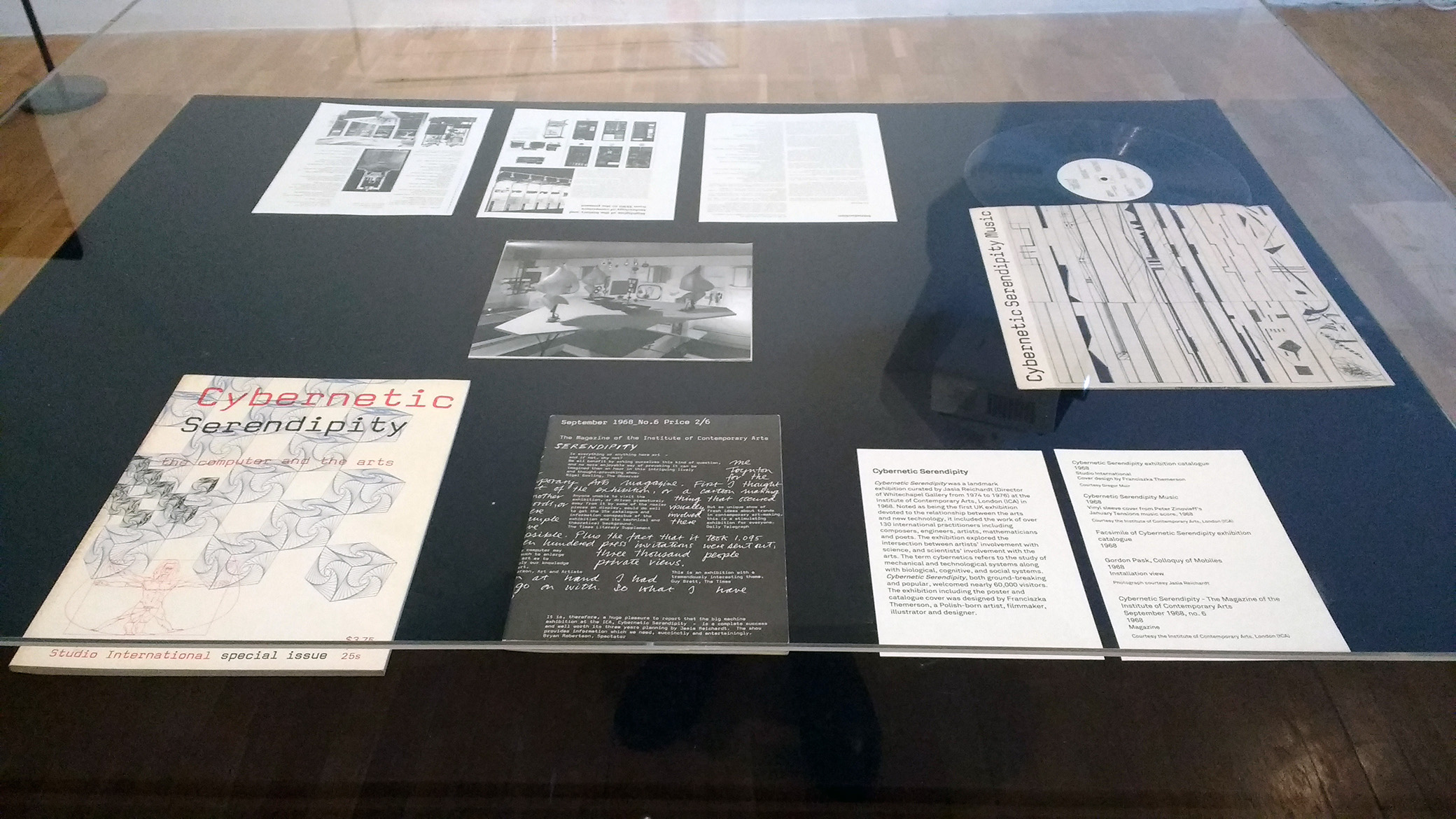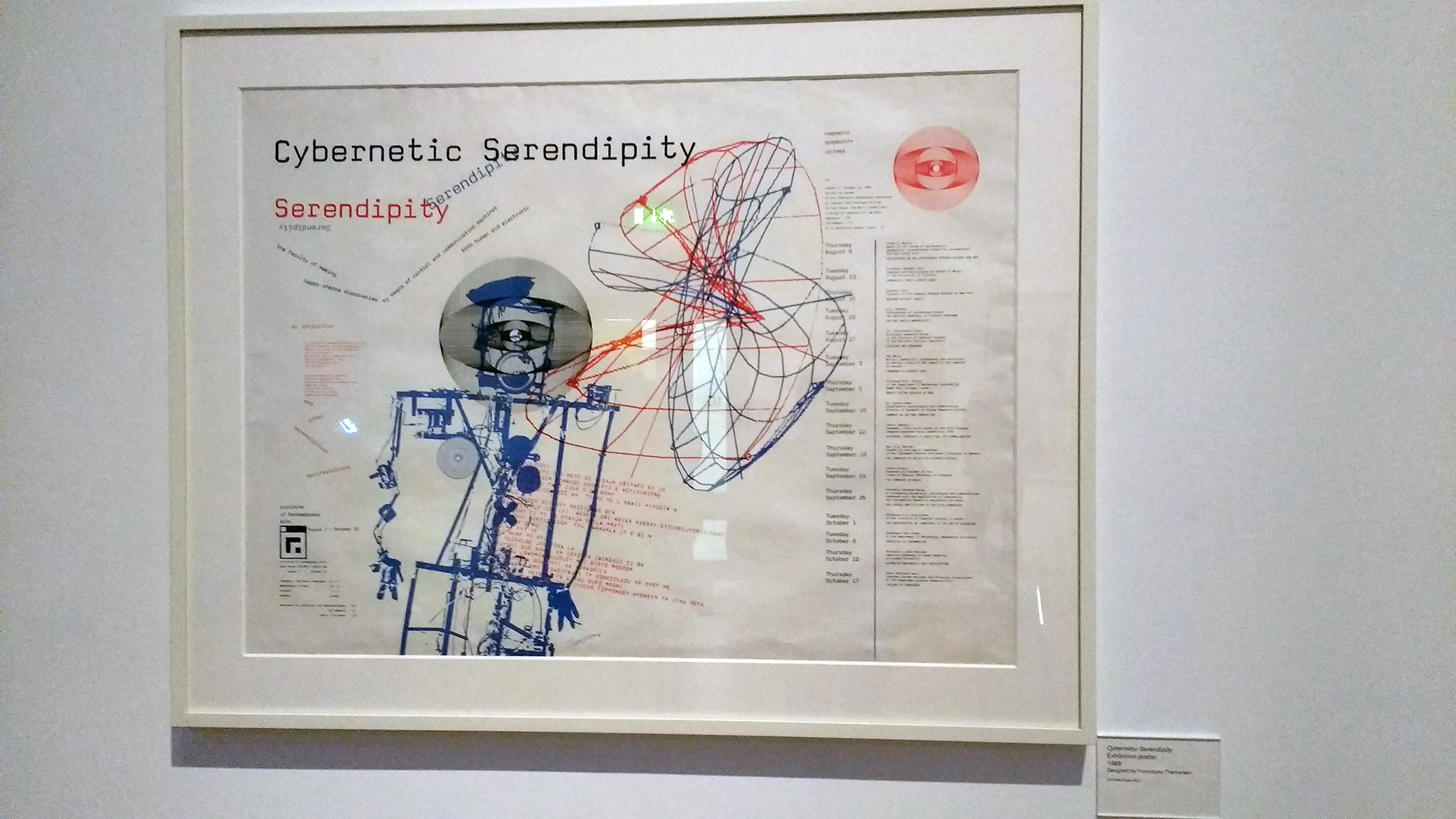By Jack Mulvaney, Special Collections Assistant
Electronic Superhighway, a major exhibition currently on display at The Whitechapel Gallery (29 January – 15 May 2016), focuses upon how contemporary art has adapted its creativity towards new digital mediums. It brings together over 100 works from established names such as Nam June Paik, from whom the exhibition title is borrowed, to more recent innovators such as Ryan Trecartin and. In the Whitechapel Gallery’s own words:
Arranged in reverse chronological order, Electronic Superhighway begins with works made at the arrival of the new millennium, and ends with Experiments in Art and Technology (E.A.T), an iconic, artistic moment that took place in 1966. Key moments in the history of art and the Internet emerge as the exhibition travels back in time.
A narrative is forged in this idiosyncratic manner, as the inverted journey through a moment of art history reveals both the convergences and differences in how artists approached the information revolution. As Electronic Superhighway examines the fascinations and malaise of virtual reality in a rhythmic fashion, it becomes interesting to look back to artists such as the aforementioned Nam June Paik and examine how the reality of our predicament matches the hypothesis of previous artists. Although the delivery and medium differed by looks dated by today’s standards, such as June Paik’s now ubiquitous TV screen sculptures formed of clunky CRT monitors, there is a clear expectation that digital life would reshape our inner lives. This is reflected in the offerings of contemporary artists, where a clear trend towards simulating the uncanny vertigo of an increasingly hyperreal virtual reality emerges in Electronic Superhighway.

Cybernetic Serendipity (1968) ephemera on display at Electronic Superhighway (2016). Images by author.
It was exciting for Special Collections & Archives of Goldsmiths Library to find an exhibit in Electronic Superhighway of documentation from the Cybernetic Serendipity (1968) exhibition, the spiritual forerunner of Electronic Superhighway, including copies of some of the rare ephemera that is held here in our very own collections.
Opening in London at the ICA in 1968, Cybernetic Serendipity was radical for its time, exploring the frontier of communications technology long before it would become a point of cultural fascination. Curated by Jasia Reichardt, the emphasis was on algorithms as a productive force generative force of artistic content.
Several mediums were used to explore this notion. There was a large emphasis on aural creativity, with a significant part of the exhibition dedicated to devices that generated unique compositions of music. Taking inspiration from composers who wrote in mathematically informed manners such as the precociously modernist Charles Ives, much of the sonic work in Cybernetic Serendipity sought to use operations taken from computing for the production of harmonious sounds.
Whilst computer’s new found utility for producing new symphonic compositions was experimented with in one manner, another aspect of Cybernetic Serendipity focused on the ‘serendipitous’ ecologies that could be produced by building systems of exchange between the user and technology. One piece performing this exact idea was an interactive installation by early synthesizer pioneer Peter Zinovieff that allowed sounds made by visitors to be sung into a microphone which then translated the sound waves and attempted an improvisation of an original piece of music.
The ICA produced a vinyl compilation of audio pieces to accompany the exhibition, featuring the likes of John Cage and Iannis Xenakis, as well as the aforementioned Zinovieff. For years this has been a scarce object as only a handful of copies were ever made and sold at the exhibition itself. Fortunately for those interested in this early foray into electronic music production, Special Collections & Archives managed to acquire a copy via a re-release run in 2014 by the label The Vinyl Factory. As the ICA website describes in their promotional materials:
Both unique and extraordinarily influential, Cybernetic Serendipity Music captured a nascent scene on the cusp of a synth-led electronic revolution and was the only compilation of its kind to bring together the musicians, composers and inventors pushing the boundaries of early computer music on one record, a good six years before Kraftwerk’s Autobahn changed modern music for ever.
Though the aural aspects of Cybernetic Serendipity were prescient, there was also much attention given over to visual manifestations of creative computing. Media art pioneer Nam June Paik was present with the mechanical sculpture Robot K-456 and some of the aforementioned interactive television sets that make an appearance in Electronic Superhighway. Jean Tinguely contributed two machines able to autonomously paint in a similar fashion to the self producing music machines described elsewhere in the exhibition, whilst his cohort in auto-destructive art Gustav Metzger created a typically terminal creation called Five screens with computer programmed to gradually disintegrate over time. Gordon Pask arranged a group of large mobiles that integrated the viewers via large moving parts. Bruce Lacey anticipated the drone age with radio-controlled robots and other automaton such as a light-sensitive owl.
A particularly curious feature of the Cybernetic Serendipity monograph is the amount of attention given of to Computer generated images, or CGI as it is often referred to now. It is clear that artificially constructed computer visuals, though not fully understood, was being anticipated on the horizon. The monograph features several pages of text and images that investigate how concepts such as pattern recognition and geometric depth will be essential to the exchanges users perform with technology. This was strongly reflected in the main exhibition in a permutations with pieces such as a simulated Mondrian piece and the iconic decreasing squares spiral that appears on the exhibition’s poster and monograph. A video from the Boeing corporation featured a demonstration of wire frame modelling, the skeletal system of interconnecting points that is now an industry standard in CGI production. This dimension of Cybernetic Serendipity highlighted the gestalt-like ability of the human brain in organizing simple shapes into complex images with depth and shade, something that would prove necessary for the later production of virtual reality.

Cybernetic Serendipity (1968) poster, on display at Electronic Superhighway (2016). Images by author.
Though dated by the immersive and hyperreal standards, Cybernetic Serendipity was radical in beginning a conversation in art about the impact information and computer technology was to have on aesthetics. It’s legacy was considered significant enough that the ICA decided to return to it in a retrospective in 2014. The nostalgia for mining previous incarnations of digital life is perhaps drawn from the interesting observations to be gained from some of the differences in how technology and culture have developed, as well as the uncanny similarities. It’s location in The Whitechapel Gallery’s Electronic Superhighway provides it with such a context, as it locates the exhibition within a series of historical trends in visual art continues into the contemporary with artists such as Cory Archangel and Hito Steyerl.
Though the monograph and vinyl record are bound behind glass at Electronic Superhighway, here at Special Collections & Archives we have both available for viewing and listening in our Goldsmiths Library facilities all year round. To inquire about arranging a booking for Cybernetic Serendipity materials or any of our other research material, please email special.collections@gold.ac.uk or call on +44(0)20 7717 2295.